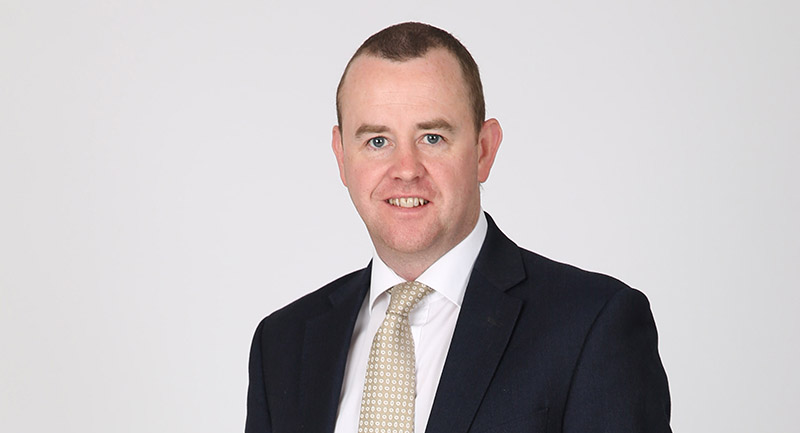By Darius McDermott, managing director at FundCalibre
At the start of this year, analysts from German asset manager DWS made a bold prediction that by mid-2023 European real estate prices would have bottomed out. Fast forward six months and analysts began to question the accuracy of their prediction.
Now, in October 2023, with inflation still prominent in the system we start to look at the opportunities in real assets and whether European real estate is now primed for a return to action.
Price corrections have eased, and DWS says there are even pockets of a modest bounceback in price growth. But for Europe as a whole, the analysts’ projections have been premature, mainly because of higher-for-longer inflation, and subsequently higher interest rates. Spring’s wobble in the banking sector has also not helped real estate financing costs.
See also: Weekly Outlook: Barclays and Unilever to release Q3 results
With investment activity running at decade lows, property yields have moved higher, with a forecast peak approximately 25 basis points higher than the analysts at DWS had forecast at the start of 2023.
“We still believe that prime pricing will reach a trough during the second half of this year, with growth resuming across all sectors in 2024,” say the DWS analysts, pointing to signs of stabilisation, investor sentiment edging higher, yields rising more slowly, and rents continuing to grow at a robust pace*.
Looking back across the summer, Marcus Phayre-Mudge, manager of the CT European Real Estate Securities fund, says that while real estate equities lost a seemingly uneventful 1% in August, this hid a rollercoaster driven by fast-evolving macro conditions. The market sold off by 9% between 10-21 August, only to recover 8% by month end. This volatility was driven by bond markets and market concerns ahead of the Jackson Hole conference.
See also: Rising bond yields: A one-off adjustment, or a warning light for investors?
But unlike the previous year, the central bankers’ symposium turned out to be a calm affair with no unexpected news. And the fact economic data – particularly relating to consumer sentiment and the labour market – showed signs of softening came as a relief, helping equities rally and pushing down bond yields.
“We continue to focus on earnings growth, which is found in companies with one of two, or both key characteristics – exposure to market rental growth and fixed debt costs,” says Phayre-Mudge.
Indexation has been a big driver of earnings growth over the last year, but the fund manager expects (and hopes) inflation will continue to fade, allowing central bankers to continue pausing their rate hiking cycle.
“Those sectors with genuine market demand and limited supply remain our focus: logistics, multi-let industrials, student accommodation and retail remain key sub-sectors, accessed via companies with appropriate leverage,” Phayre-Mudge says.
In retail, he continues to observe strong operating performance for shopping centres – one of the surprises of 2023 has been how the consumer has held up despite well-documented inflationary pressures.
Fundamentals remain strong amid inflationary backdrop
Looking ahead, Rogier Quirijns, head of European real estate at Cohen & Steers, which runs both the European Real Estate Securities fund and the broader Global Real Estate Securities fund, says commercial real estate fundamentals remain on a strong footing.
Cash flows, he points out, generally remain sound, and he anticipates healthy earnings growth in 2024. High operating margins, low sensitivity to commodity and labour prices, as well as inflation-linked rents, all support the case for real estate companies, he adds.
“All this makes them better suited than traditional asset categories to defend against a prolonged environment of higher than target inflation,” Quirijns says.
He believes global REITs, which have seen improved valuations with the correction in share prices in 2022, “offer attractive return potential relative to broad equities and that there is an attractive entry point emerging for REITs”.
With the US, UK and Europe all still uncertain about whether they will enter recession in the coming months, the case for REITS is that they tend to perform well in that environment.
Historical returns in recessionary periods, on a next-12-month basis, are greater than 10 per cent for the US and more than 14% for European listed REITs, according to Cohen & Steers’ data, and Quirijns points out the best entry points for REITs have come early in the cycle.
See also: PA ANALYSIS: The trials and tribulations of investing in European equities
Another argument in favour of real estate is the transitioning that appears to be happening in certain parts of the world from a stagflationary environment, which has been a headwind for real estate, to a stagnationary environment, which has historically been accommodative for REITs.
“The end of a rate-hike cycle is typically a very good environment for listed REITs,” Quirijns says. “In fact, US listed REITs have historically produced returns above 15 per cent over the six months following the end of a Fed hiking cycle.”
That’s also important for global listed REITs, Quirijns says, not only because the US is typically a leading indicator for international markets, but also because US REITs compose nearly two-thirds of global REIT assets under management.
The last 18 months have been hard for real estate investors. But with a raft of macro headwinds (which have historically been tailwinds for REITs) combined with some good fundamentals, the tide looks to be turning.
In addition to the Cohen & Steers European Real Estate Securities and CT European Real Estate Securities funds, investors may also want to consider the TR Property Investment Trust (also managed by Phayre-Mudge). The trust invests in both the UK and European commercial property market, appealing to investors looking for solid capital growth, along with a growing dividend. It has historically performed well during points of market turbulence and is also trading on an attractive discount of 8.6%.










